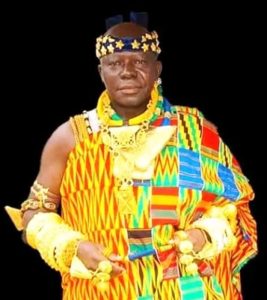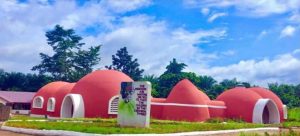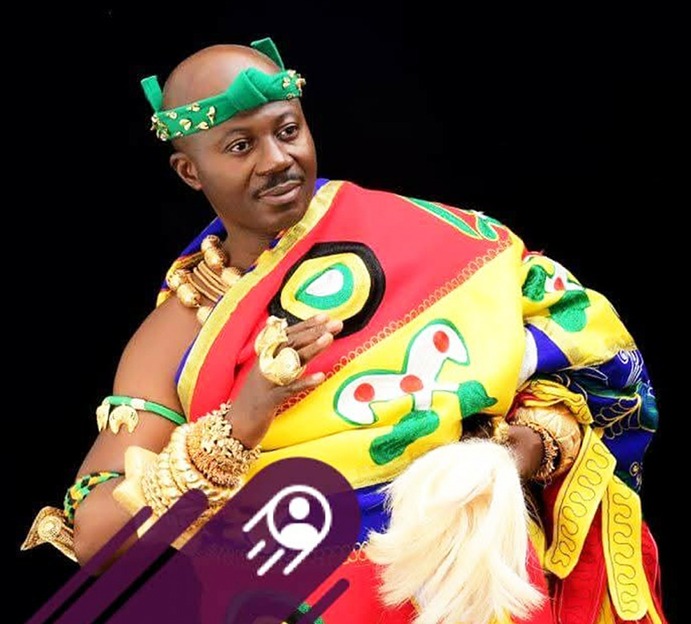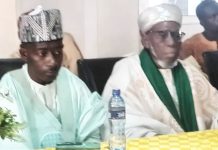Kwabre Heman, located in the Afigya Kwabre South district of Ashanti region, is fast becoming a centre of attraction and tourist destination for all visiting African-Americans to Ghana. The reason is not farfetched.

Inside this historic community is the emerging Gyamadudu Museum, the baby of Nana Appau Wiafe Ababio Sanwoansan, who has occupied the Ekuona Apau and Brefo stool of Heman, as chief of Kwabre Heman, since June 22, 2015.
Five years into his reign, the construction of the proposed Gyamadudu Museum started in 2020 to add to the existing ones in Ashanti region, to help preserve cultural heritage and historical values of the people of Ashanti and sustain traditional norms, customs and practices and usage as his legacy.
The project is based on Nana Sanwoansan’s experience from visits to renowned museums, including African-Americans Museum in Washington DC, Togo and Egypt where he traced linkages to the Ashanti culture and tradition.
During a visit to the Pyramids in Egypt, Nana Sanwoansan realised some of the Egyptian Pharaohs bore Akan names signifying direct cultural linkage and identity.
He mentions Pharaoh Akuffo (Akufo): Pharoah Akhenaten (Akenten) and Pharaoh Tutankhamen (Tutu Ankama), which he believes originated from Ghana, because our forefathers and ancestors bore those names too.
He also chanced upon cultural items like coins, regalia and clothes at the Pyramid, which have similarities to those used by the Assntehene, Otumfuo Osei Tutu II, to give credence to cultural linkages.
Nana Sanwoansan has always made efforts to ensure that history and traditional values are not adulterated, hence he takes pains to research into items he intends to display at the proposed Gyamadudu Museum.

The Gyamadudu Museum project comes with a manifold of motives. Nana Sanwoansan believes heroes should be honoured and sees the establishment of the Museum as a way of honouring personalities who have contributed to the development of society by way of their statues.
He also seeks to promote our cultural heritage and move away from the dominance of western culture and hopes that the Gyamadudu Museum will encourage Africans and Ghanaians to cherish their tradition and culture by adding value to culture and showcase their cultural inheritance for the benefit of school children and future generations.
This will bring meaning to the oral tradition and history of Asanteman, as well as create employment opportunities for the youth, while boosting tourism to increase foreign exchange earnings.
The chief’s quest to preserve cultural heritage and historical values of the people of Ashanti is showcased in the award winning feature film, “Kum Aduosia”, which he wrote and directed.
In April 2019, “Kum Aduosia” won the best film award at the first-ever Kumasi Film Festival, which sought to showcase African Culture.
The first Kumawood movie that focuses on Asante traditional culture, land acquisition process and the nomination, installation and enstoolment of chiefs and land management system, “Kum Aduosia” tells a story of a Queen mother who faces stiff opposition in the selection of a chief.
Nana Sanwoansan (Unstoppable in his track) believes every African name and cultural item has a meaning and historical value and must be preserved hence the ultra-modern Gyamadudu Museum.
The Gyamadudu Museum, sited on a 10-acre parcel of land, comprises nine interlinking domes to accommodate precious cultural exhibits, collections and artefacts to serve as a centre of studies on African culture and help preserve cultural heritage of the people of Ashanti and sustain traditional norms, customs and usages and practices.
It has spaces for statues and images of Ashanti Kings and Queenmothers and eminent personalities, including the occupant of the Golden Stool, Opemsuo Otumfuo Osei Tutu II, the Asantehene, Nana Nyarko Kusi Amoah, the first Asantehemaa, the Otumfuo Opoku Ware II, High Priest Okomfo Anokye and the legendary Nana Yaa Asantewaa of Ejisu.
The Museum also has a place of honour for Statesmen and Pan African leaders, including Osagyefo Dr. Kwame Nkrumah, Ghana’s first President; Nelson Mandela of South Africa; Col. Muamar Gaddafi of Libya and Emperor Haile Selaisie.
A part of the premises of the Museum is allotted to display of mummies and interment of African Americans who claim Ghana is their country of origin and want to be buried at. The ashes of two of such African descent have already been interred there.
According to Nana Sanwoansan, images of freedom fighters across the globe would also be featured prominently within the walls of the Museum, decorated with Adinkra symbols.
Among the collections at the Museum are Centre for the production of designer Kente cloths and African stool regalia to add value to such cultural items for packaging and branding.
River Anyinasu, which passes through the designated Museum area, adds to the side attraction of the Museum besides a space for showcasing the Slave Trade.
Along the Anyinasu River is a Cottage, which walls are dedicated to African Americans who visit Heman periodically as their Home of origin. Nana Appau Wiafe Sanwoansan acknowledges that Madam Sunderland Adwoa Dawn, Executive Director of Bridge-To-Africa Connection (BTAC) is the backbone of the Museum project, which is already attracting tourists to Ghana.
The Hemanhene has credited the Asantehene, Otumfuo Osei Tutu for encouraging him in this endeavour and expressed appreciation for the chance given him to serve as chief of his community and promote Asante culture in his own small way.









